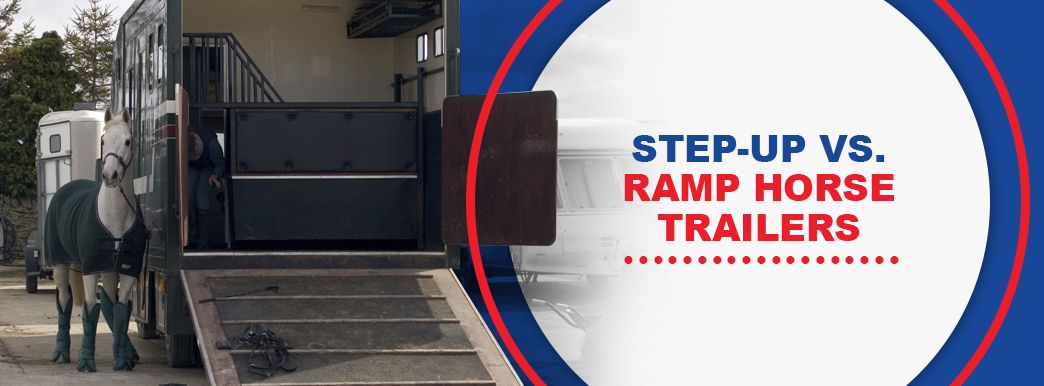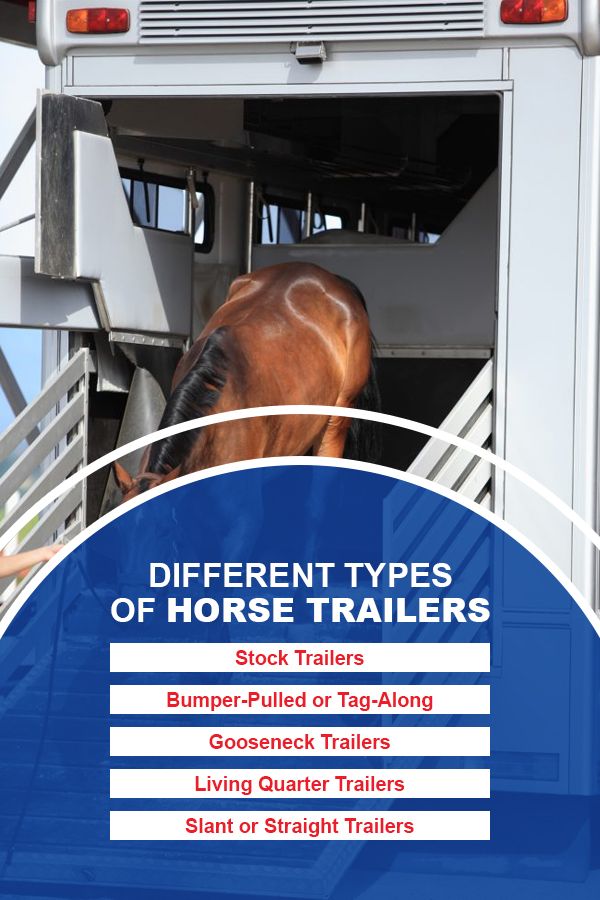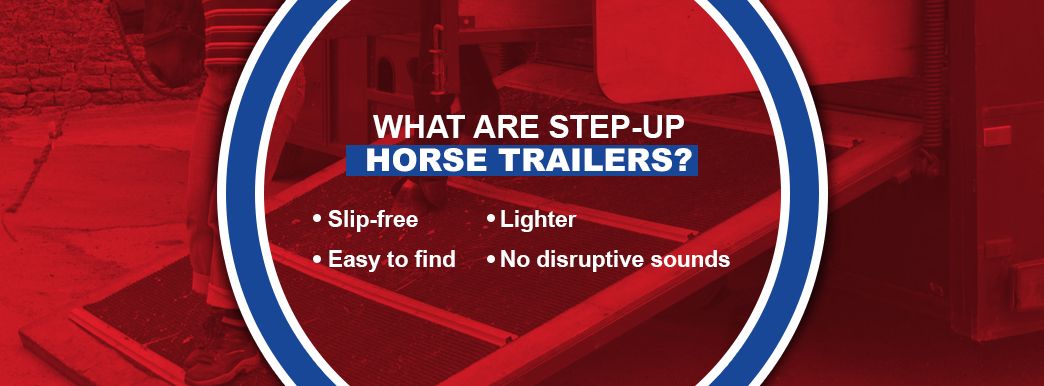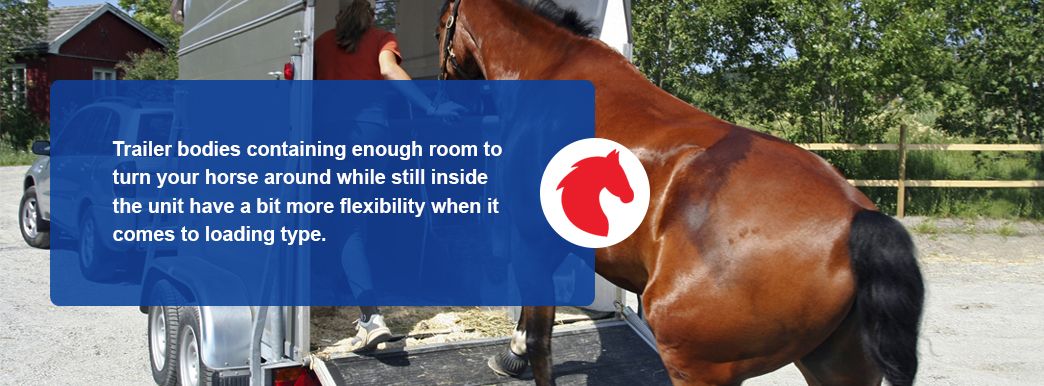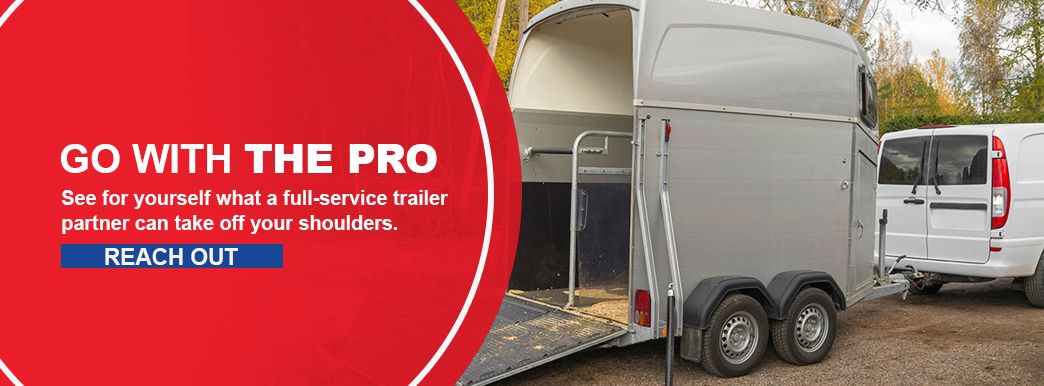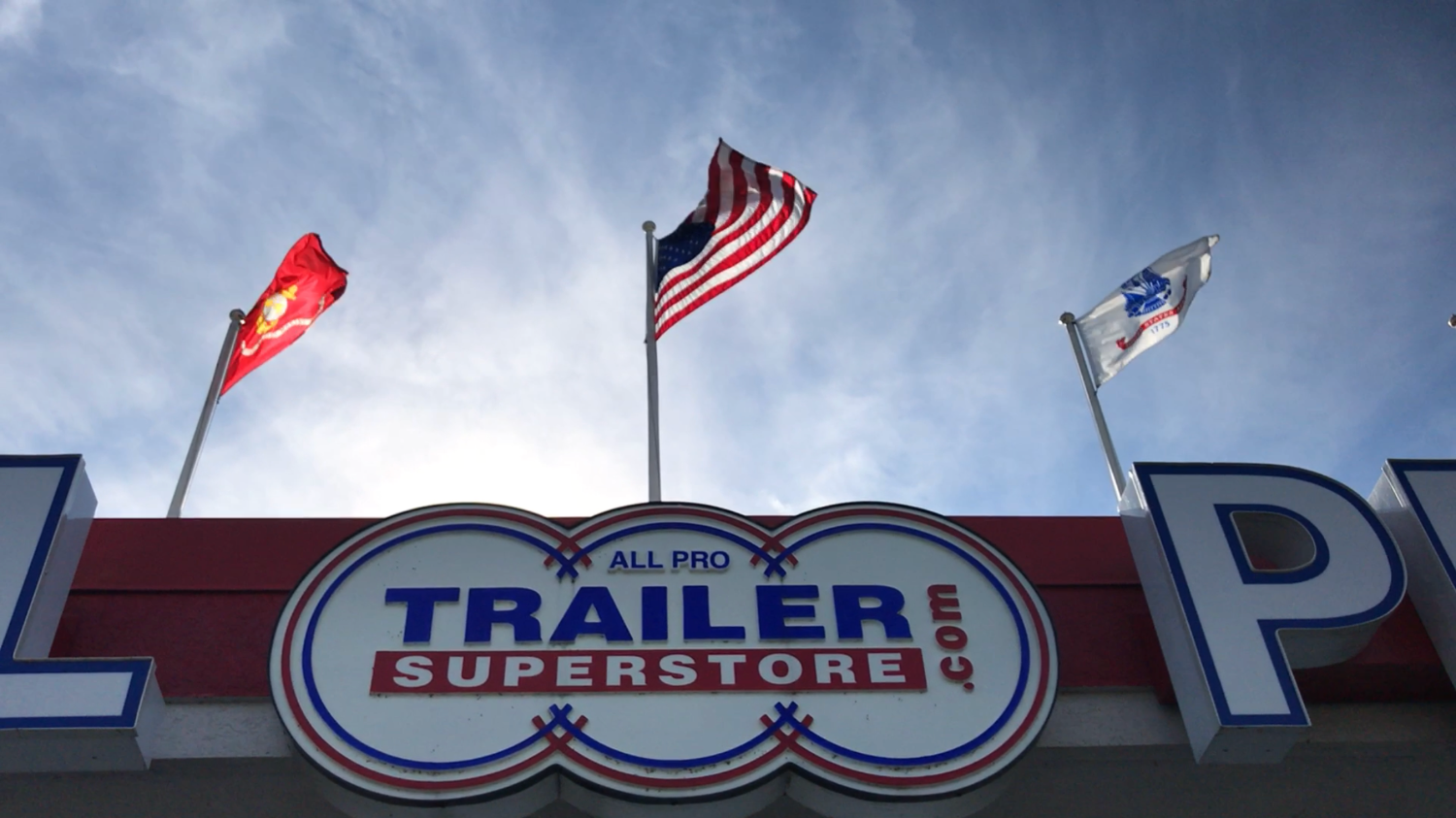Step-Up vs. Ramp Horse Trailers
Mar 26, 2020Last Updated on September 30, 2024 by Eric Miller
Last Updated on September 30, 2024 by allprotrailersuperstore
Loading a horse safely into a trailer can feel part art and part science.
On one hand, you must prioritize the comfort of your horse. Rushing or goading into a trailer bed is a sure way to excite hesitation, even fear, from your animal, resulting in serious accidents. Yet on the other, loading should take place quickly and efficiently — especially when you’re loading two or more horses plus stowing a fair amount of tack.
Enter the ongoing debate of ramp versus step-up horse trailers. Which configuration is right for your rig?
Table of Contents
- Different Types of Horse Trailers
- What Are Step-Up Horse Trailers?
- What Are Ramp Horse Trailers?
- Choosing a Step-Up or Ramp Horse Trailers
- Go With the Pro
Different Types of Horse Trailers
There are dozens of horse trailer varieties available today. Each trailer type features differences in stall positioning, hitching systems, tack storage, climate control and transportation conveniences, among other trailer amenities for owners and horses alike.
1. Stock Trailers
Stock trailers are the most economical horse trailer type to transport your animals long distance. These units offer a basic, no-frills approach to loading, hauling and unloading your horses and gear, with the vast majority maintaining step-up entrances without a ramp.
Stock trailers are open-floor, meaning they do not contain any stalls or partitions. Horses are led forward into the trailer bed and can be tied frontwards or on an angle. Angling your horse can save space when transporting more than one animal, as well as leave room for additional tied-down cargo within the unit.
Among their other distinguishing traits, stock trailers are open air. Designed to transport cattle, this trailer type contains ample window cutouts along its trailer walls allowing fresh air and sunlight to pass through — a comfort for finicky traveling horses.
2. Bumper-Pulled or Tag-Along
Bumper-pulled horse trailers are a popular trailer type offering a range of fundamental transportation amenities.
As their name suggests, these trailer types attach to your main vehicles’ hitch, most often found beneath truck rear bumpers. A standard bumper-pull horse trailer can comfortably transport up to two mature horses. Larger, multi-horse bumper pull trailers are available as well, including premiere units that contain individual box stalls for each horse.
Because of their hitch-based design, bumper pull trailers can be a little more challenging to steer, especially while backing up. They will also be more susceptible to strong winds and uneven terrain.
Learn more about tag-along trailer units, including tips on how to safely hitch your bumper-pulled horse trailer.
3. Gooseneck Trailers
Gooseneck trailers are a spacious horse trailer type that connects to your towing vehicle via a unique overhang design.
Rather than attaching through a system beneath your truck’s rear bumper, a gooseneck’s overhang feature contains a ball hitch and coupler that slides over and attaches with your truck bed. The result is a maneuverable, sturdier connective unit and a smoother ride for your horses over long distances, in various weather conditions and across terrain types.
Goosenecks come in a range of sizes, from cozier models with a two-horse-capacity to units that can carry up to six horses. Most are designed with tack storage shelving, plus other amenities like saddle racks and front trailer doors for safer handler exits.
4. Living Quarter Trailers
Living quarter trailers are the largest and most lavish of all horse trailer types. Similar to a gooseneck trailer, these units consist of your horse’s main trailer body and an overhang attachment system. Unlike a gooseneck — or any other horse trailer type — these models also contain an attached living quarter, ideal for long-distance traveling or as your accommodation when staying at shows, fairs and events.
Common living quarter trailer amenities include a kitchenette, dinette, bathroom, bedroom and ample storage for horse tack. The size and scale of these amenities will vary depending on the overall price of the unit.
5. Slant or Straight Trailers
Slant and straight trailers are not horse trailer types themselves, but rather interior configurations that can be found in any of the above trailers. They’re one of the most important details to consider when picking your ideal horse trailer since they determine how your horses will stand across your road trip.
Straight trailers mean horses will be standing forward, with tails at the rear of the unit. Slant trailers, on the other hand, stagger horses to stand at 30- to 45-degree angles within the trailer body. Unlike with straight trailers, slant trailers are more forgiving on horses’ legs, particularly because a horse can better use its stronger haunches for support while the vehicle accelerates and brakes.
What Are Step-Up Horse Trailers?
Step-up horse trailers are models where a horse must step up into the trailer body by itself to enter. They do not contain any sort of incline or support while loading and are generally the default design in most standard trailers.
Properly sized step-up units shouldn’t sit much higher than the height of your horse’s knees. Any trailer requiring a horse to step up significantly above its knees will be far more challenging for your horse — and by proxy, you. Loading when these heights are off may even require additional training or coaxing to ensure your horse does not attempt to jump or hop into the trailer, preserving the safety of the load and the condition of your trailer.
The intuitive approach and simple design of step-up horse trailers contains several unique benefits:
- Slip-free: Today’s standard horse ramps are made from steel or aluminum bases. Both materials can be incredibly slippery when wet, making it difficult for a horse to have proper traction while climbing the incline. Even a horse whose recently walked through wet grass may experience problems moving up and down a ramp slip-free.
- Easy to find: Step-ups are the most common loading and unloading configuration in standard horse trailers.
- Lighter: Horse ramps can add significant weight to your trailer. Plus, they can be too heavy to lift and lock on your own, risking the ramp coming loose and hitting either yourself or your horse.
- No disruptive sounds: Horses are known to get spooked by the hollow clanking of their hooves on metallic ramps. They may also be uncomfortable with the feeling of a ramp’s give as they walk up. Step up units do not pose any of these risks.
Overall, step-up trailers provide a simple, instinctive way to load and unload horses. Potential downsides to consider for step-up trailers include:
- Above the knee stepping heights: Horses will be much less inclined to step up if the trailer height is above their knee. This is especially true if you’ve recently been trail riding and jumping, which tires and stiffens your horse.
- Horses’ age and health: Step-up trailers may prove difficult for foals, older horses and sick or injured horses. And while it might seem obvious, standard trailer body heights can be challenging to reach for most pony breeds that are 4 feet or less.
- More challenging horse backing: Training a horse to safely back out of a trailer will take longer with a step-up design than a ramp. This is a major concern if your trailer isn’t big enough to turn a horse around to unload face-first.
What Are Ramp Horse Trailers?
Ramp trailers are units that contain a rear ramp that allows horses to walk up and into the trailer on a gradual incline, rather than enter the trailer in one upward, unassisted step. They come in one of two forms, with the ramp either serving as a trailer’s rear door itself or as an attachment to the trailer rear.
Ramps can be included in the original design of the horse trailer or be added as a horse trailer customization. Custom add-on ramps let you pick the exact materials and makeup of your ramp and can be especially useful when outfitting a used or refurbished trailer. Bear in mind that most horse ramps are made from steel or aluminum grading frames containing reinforced fiberglass components. Aluminum is slightly lighter than steel but more expensive to repair.
Overall, horse ramps tend to match the materials of its accompanying trailer. A ramp’s hinges, locks, gears and springs need regular lubrication to prevent rust and wear. Many owners of horse ramps will also treat their units with a protective coating to add traction to their surface, helping horses load and unload in wet conditions without slips.
There are many ramp horse trailer benefits to consider:
- Gentle incline: Ramps allow you to ease horses into a trailer body. For pony breeds, young horses, aging horses or horses with foot or leg injuries, this gradual incline is gentler and more approachable than even a light step-up. What’s more, customized horse trailer ramps can even be installed at tailored low pivot points to ensure as smooth of an incline as possible and reduce slipping.
- Safer horse backing: Backing out a forward-facing horse can be a difficult, cumbersome process — especially with old, young or frightened horses. That process turns into even more of a headache with a basic step-up trailer bed that doesn’t contain enough interior room to turn the horse around before unloading. Sudden, unexpected drops are the quickest way to spook a horse into kicking and flailing, risking injuries for all parties involved.
- Stability: Ramps provide added weight, helping ground a parked horse trailer. This gives you a little more flexibility where you park, load and unload your animals and track. Horses themselves won’t have to contend with variable stepping heights triggering hesitation while loading and unloading.
Remember the following if you’re looking into ramps for your horse trailer:
- Proper ramp care: Certain ramp components will require occasional maintenance to upkeep properly. That means oiling and lubricating rust-prone metal bits like the locks, latches, hinges and more. Also ensure to inspect your entire ramp system, particularly the condition of the locks and latches. For additional security, some people even use heavy-duty carabiners or padlocks to lock horse trailer latches into place even further.
- Ramp weight: Older horse ramp types were notoriously heavy and cumbersome for a single person to lift. Today’s horse ramps, however, come with spring assistance, allowing one individual to lift and lock the ramp in place with one hand.
- Ramp spring: Springy ramps cause noticeable underfoot flexing, which can scare horses. Ensure inclines, ramp weight and latches are all harmoniously balanced to minimize spring and contribute to smooth horse loading and unloading.
Choosing a Step-Up or Ramp Horse Trailers
Deciding between a ramp or step-up trailer is far from a horse apiece. Feel confident in your decision using the following trailer characteristics to determine which loading style is right for you.
1. Trailer Body Size
Trailer bodies containing enough room to turn your horse around while still inside the unit have a bit more flexibility when it comes to loading type. That space means you can rotate the horse to unload face-first, meaning they can actually see where they’re stepping. Horses of all ages and sizes will feel innately more comfortable with this kind of maneuvering.
If turning your horse within the trailer body isn’t an option, a ramp may be right for you. Ramps eliminate any blind step-downs or sudden drop-offs spooking your horse.
2. Tack Space and Other Loading Conveniences
It’s not just a horse you’re loading and unloading. Trailers must also transport a wide range of accessories, riding materials and general horse care items, including saddles, pads, headgear, reins, bits, breastplates, martingales and half a dozen other riding items.
Loading, organizing and unloading these materials is no small task. Many trailers designed specifically for horse transportation will come with various storage spaces dedicated to tack. Storage areas help prevent crowding your horses as well as ensure you don’t need to load or unload in a confined space within a horse’s kicking radius, creating a safer environment for all.
3. Horse Age and Health
Older, less mobile horses will benefit from the gentle incline of loading and unloading via a ramp. The same logic applies for horses with injuries or physical impairments preventing their full range of natural motions, or for younger horses still in training and development phases.
Having a customized horse ramp on-hand is ideal if any of these situations are pertinent. Even brand-new horse trailers with all the latest design details and features can benefit from a custom ramp when you’re preparing for the natural aging of your horse.
4. Weather and Road Conditions
You can’t control the weather while you’re on the road. Horses loading or backing out via a ramp will be more susceptible to slips if the ramp’s surface is wet or dusty. While certain ramp treatments can help increase surface friction as well as maintain the quality and integrity of this trailer accessory, you may simply not want the slip risk.
Do note, however, that step-up trailers involve a bit more strategic parking. Ensure you’re stationing your trailer on as flat, even of a surface as possible. You’ll also need to note the total height between the ground and your trailer bed floor. Any height difference greater than the length of your horse’s knee will be difficult, even uncomfortable, for them to step up to without incline assistance.
5. Budget
In general, ramp horse trailers will be more expensive than step-up trailers.
This cost differentiation is often a significant reason handlers opt for the standard step-up horse model. However, bear in mind that investing in a top-tier ramp will save you time and frustration as a handler in specific situations, as well as preemptively allow easier handling of sick, young or aging animals. These high-quality horse ramps carry high-friction surfaces, strong materials, easy support and latch systems and minimal — if any — hollow metallic clanking as your horse moves across. The result is a simple inclined system that will last through the years.
Go With the Pro
Only one trailer company in the nation provides:
- A stock of 1,000+ new and pre-owned trailers
- Trailer accessories
- Repairs
- Customizations
- Financing options
- Inspections
- To-your-door trailer delivery
All Pro Trailer Superstore does this — and more. We mean it when we say we’re a full-service trailer dealership ready to partner with you on your lifelong horse trailer needs.
See for yourself what a full-service trailer partner can take off your shoulders. Then chat with one of our Trailer Superstore experts on our stock of horse trailers, including premiere step-up and ramp models.


